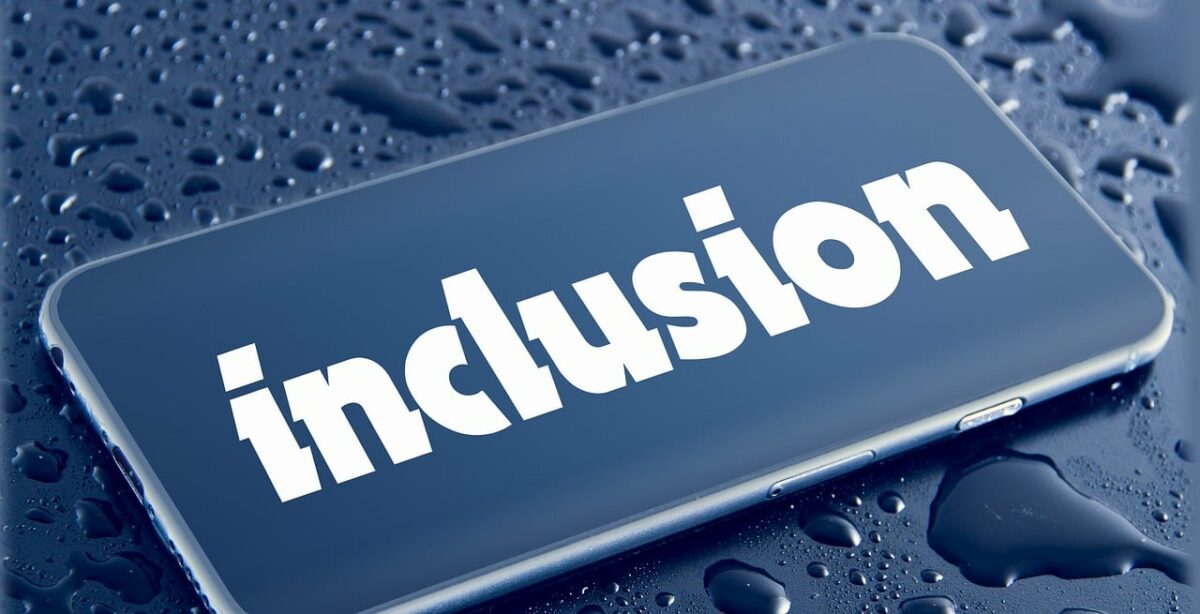Draft Job Descriptions – What You Need To Know

Navigating the world of recruitment requires more than just an understanding of the role you’re hiring for; it demands a strategic approach to communicate the nuances of that role to potential job seekers. Central to this strategy is the job description. These descriptions serve as the bridge between employers and prospective employees, painting a clear picture of the role, its responsibilities, and its place within the broader company landscape. But crafting an effective job advert isn’t just about listing duties. It’s an art that blends clarity, inclusivity, and strategy, ensuring that you not only attract candidates but the right ones. Dive in as we unravel the intricacies of writing from scratch or getting a head start with draft job descriptions for the pivotal role of recruitment.
Quick Links:
- Why Properly Drafted Job Descriptions Are Crucial
- Steps To Draft Job Descriptions That Stand Out
- The Craft Of Language In A Draft Job Description
- Collaboration: The Key To Comprehensive Job Description Drafts
- SEO Insights: Making Your Draft Job Descriptions Discoverable
- Legal Nuances In Draft Job Descriptions For The UK Market
- Reviewing And Refining: The Continuous Cycle Of A Draft Job Description
- Additional Resources For Draft Job Descriptions
- Writing A Job Description FAQs
Highlights And Key Takeaways:
- Strategic Crafting: Draft job descriptions are more than mere lists of responsibilities; they are strategically crafted documents that blend clarity, inclusivity, and purpose to communicate the essence of a role to potential candidates.
- Continuous Evolution: Job descriptions are dynamic entities, requiring regular reviews and refinements to stay updated with role evolutions, industry standards, and company values, ensuring their continued relevance and accuracy.
- Legal and SEO Considerations: Beyond content, draft job descriptions for the UK market must be compliant with employment laws, avoiding any discriminatory language, and should be optimised for search engines to ensure maximum visibility and discoverability in the digital landscape.
Why Properly Drafted Job Descriptions Are Crucial

In the competitive landscape of the UK job market, the significance of a meticulously crafted job description cannot be understated. Recognising its vital role is paramount for both organisations and potential candidates.
- Attracting the Right Talent: A well-written job description serves as a beacon, drawing in candidates who are not just qualified but also align with the organisation’s culture and values. It speaks directly to those you wish to attract, ensuring a better fit and reduced turnover.
- Clarity and Expectation Management: A comprehensive job description sets the tone, providing potential candidates with a clear understanding of the role, its responsibilities, and what the company expects from them. This proactive clarity can mitigate future misunderstandings and set the foundation for a positive working relationship.
- Legal Implications: In the UK, the wording and content of job descriptions carry legal implications. Crafting them with precision ensures alignment with UK employment laws, such as the Equality Act 2010, safeguarding the company against potential legal pitfalls.
- Consistency and Branding: A consistent voice and branding in job descriptions reinforce the company’s identity and values. This helps solidify the company’s image in the minds of potential candidates, making them more likely to engage and resonate with the organisation’s ethos.
In conclusion, a properly drafted job description is more than just a list of duties; it’s a strategic tool that, when utilised effectively, can significantly enhance the recruitment process, ensuring companies attract and retain the best talent available.
Steps To Draft Job Descriptions That Stand Out

Initiating the process of drafting a job description might seem daunting to many. While one can always start from scratch, utilising a draft job description template or job advert template can significantly streamline the process. Samples and examples provide a reliable foundation, ensuring that you don’t miss out on any vital details. They can also serve as a source of inspiration, making the task less overwhelming and helping to maintain a professional tone. But regardless of your starting point, there are certain steps that can elevate your job description above the rest:
1. Clear Job Title
Choose a title that’s both descriptive and concise. It should give potential candidates an immediate understanding of the role’s nature and level. Read our guide What Is A Job Title? for tips on choosing job titles that will make you job description stand out and our blog Job Title Examples to uncover the top ranking job titles that qualified candidates are searching for today.
2. Define Roles, Responsibilities, and Reporting Structures
Outline the primary duties, ensuring each is clearly defined. This section should paint a vivid picture of what a typical day in the role looks like. You should clarify who the individual will report to and if they’ll have any managerial responsibilities.
3. Outline Required Qualifications, Skills, and Experience
You should list essential qualifications and any desired ones. Specify the skills and competencies that the candidate should possess and Mention any required experience, highlighting relevant industries or roles. Our articles What Qualifications Should I Include In A Job Description and What Skills To Include In A Job Description will guide your further on how to integrate years of experience, nice to have skills, technical skills, personality traits, and preferred qualifications into a compelling job description.
4. Salary and Benefits
For an effective job description and job posting, be transparent about the pay range, ensuring it’s competitive and in line with industry standards. Highlight any additional benefits, such as health insurance, pension schemes, or training opportunities.
5. Company Culture and Values
Provide insight into the company’s ethos, mission, and work environment. This gives potential candidates an understanding of what it’s like to be part of the team.
6. Call to Action
End with a compelling call to action, guiding potential candidates on the next steps, whether it’s applying directly or getting in touch for more information.
By following these steps and ensuring you’ve either crafted a thoughtful description from scratch or refined a comprehensive template, you’re well on your way to creating a job description that not only attracts but also resonates with top-tier talent.
The Craft Of Language In A Draft Job Description

Language plays an instrumental role when you write a job description. It’s the medium through which you communicate your expectations, convey the role and your company culture, and entice potential job seekers to take action. However, striking the right balance in your wording is pivotal to its effectiveness:
1. Using Precise and Actionable Language
A well-written job description gets straight to the point. Opt for concise and clear sentences that convey expectations without ambiguity. Utilise verbs that call candidates to action, such as ‘manage,’ ‘deliver,’ or ‘collaborate.’ This instils a sense of purpose and clarity about the role’s requirements.
2. Ensuring Inclusivity and Avoiding Discriminatory Language
Crafting an inclusive job description is not just ethically sound but also widens your potential talent pool. Avoid gendered terms like ‘chairman’ in favour of neutral alternatives like ‘chairperson.’ Stay clear of age-revealing terms such as ‘recent graduate’ which can be perceived as age discriminatory. Always aim for language that welcomes a diverse range of applicants.
3. The Importance of Using Keywords for Online Visibility:
In the digital age, ensuring your job description is visible online is crucial. This means incorporating relevant keywords that potential candidates are likely to use in their search. Keywords enhance the discoverability of your description on job boards and search engines.
A key advantage of using draft job description examples or templates is that they’re often already optimised with the most pertinent keywords. This gives you a head start in ensuring that your description is both search-friendly and relevant to the type of work.
In essence, the language used in your job description is not merely informative; it’s persuasive, inclusive, and strategic. By giving careful consideration to your word choices and embracing the craft of language, you elevate the potential of your job description, encouraging the most fitting people to apply.
Collaboration: The Key To Comprehensive Job Description Drafts

Drafting a job description that truly encapsulates the essence of a role is no solitary task. Collaboration is pivotal in ensuring that the description is not just comprehensive but also authentic to the position’s daily realities and the company’s culture. When preparing effective job descriptions, make sure you:
- Consult with Department Heads and Team Leaders: Before you even begin writing job descriptions, make your job more manageable by reaching out to those who understand the role best. Department heads and team leaders can offer invaluable insights into the nuances of the position, from core job responsibilities to the finer intricacies that might not be immediately obvious.
- Engage Current Employees: Who better to provide a real-world perspective of the job post than someone currently performing it? By discussing the role with existing employees, you get a first-hand account of the job’s challenges, rewards, and day-to-day expectations. This not only makes a good job description more accurate but also paints a vivid picture for a potential job seeker.
- Incorporate Feedback for a Well-rounded Description: Once you’ve drafted the initial job description, circle back with those you’ve consulted to gather feedback. This collaborative review process ensures that you’ve captured the job purpose accurately and haven’t overlooked any critical aspects. It helps in refining the description, ensuring it’s both comprehensive and relevant.
In a nutshell, to truly make your task of crafting an authentic and effective job description successful, collaboration is key. By engaging with those familiar with the job postings and integrating their feedback, your recruiting process not only becomes easier but also results in a description that resonates with the right candidates and your future hire.
SEO Insights: Making Your Draft Job Descriptions Discoverable

The success of your job posting isn’t solely reliant on the content’s quality but also its discoverability. Leveraging Search Engine Optimisation (SEO) can significantly enhance the visibility of a good job description, ensuring it reaches the intended audience effectively.
Tips for Boosting Visibility on Search Engines:
- Keyword Optimisation: Identify the most relevant keywords for job titles. These should be terms potential candidates are likely to use when searching for positions. Incorporate these keywords naturally throughout the job description, especially in the title and introductory paragraphs.
- Mobile Optimisation: With an increasing number of job seekers searching via mobile, ensuring your job description displays correctly on smaller screens is essential. A mobile-responsive design ensures readability and user engagement.
- Use Meta Descriptions: A compelling meta description summarising the job role can boost click-through rates from search results. Ensure it’s concise, engaging, and contains your primary keyword.
- Internal Linking: If your job description is posted on your company website, link to other relevant pages, such as company culture or benefits sections. This not only aids in navigation but also boosts SEO.
Importance of Keeping Up with SEO Trends to Ensure Job Ad Discoverability:
- SEO is a dynamic field, with search algorithms and best practices continually evolving. Staying updated with the latest trends is paramount. For instance, voice search optimisation and semantic search are becoming increasingly significant in recent years.
- Regularly review and update your job descriptions based on current SEO practices. This ensures sustained visibility and relevance.
- Consider utilising SEO tools and platforms that offer insights into keyword rankings, search volumes, and competitor analysis. This knowledge can guide tweaks and refinements to your job postings, ensuring they remain at the forefront of search results.
In conclusion, while an Engaging job description is the foundation, integrating SEO insights is the catalyst that propels it to a wider audience. By prioritising discoverability alongside content quality, you ensure that your job descriptions resonate with and reach the best candidates.
Legal Nuances In Draft Job Descriptions For The UK Market

In the UK, the creation of job descriptions isn’t merely an exercise in clarity but also in legal compliance. It’s imperative that descriptions avoid any form of discriminatory language or criteria that could be viewed as prejudicial based on age, gender, race, disability, sexual orientation, religion, or any other protected characteristic under the Equality Act 2010. Furthermore, accurately representing the role’s responsibilities ensures that employers are protected from potential misunderstandings or misrepresentations down the line. Employers should stay well-informed about UK employment law, ensuring that every job description is both inclusive and compliant, thus safeguarding against legal ramifications.
Reviewing And Refining: The Continuous Cycle Of A Draft Job Description

A job description isn’t a static document; rather, it’s a living entity that evolves in response to the dynamic nature of roles, company needs, and market trends. To ensure it remains relevant and effective, a continuous cycle of reviewing and refining is essential.
- Adapt to Role Evolution: As businesses grow and industries shift, roles often evolve. Whether it’s the addition of new responsibilities, changes in technology, or shifting team structures, job descriptions should mirror these changes to offer an accurate portrayal of the position.
- Feedback Integration: Gathering feedback from recent hires about the accuracy and clarity of the job description they responded to can offer invaluable insights. If they found discrepancies between the description and the actual role, or felt something vital was omitted, these insights can guide refinements.
- Stay Updated with Industry Standards: Regularly benchmarking your job descriptions against industry standards ensures they remain competitive. This includes aspects like salary information, qualifications, and even the phrasing of key responsibilities.
- Periodic Reviews: Even if the role doesn’t witness significant changes, periodic reviews of job descriptions are prudent. This ensures that any subtle shifts or gradual evolutions are captured, keeping the description current.
- Incorporate Diversity and Inclusion Progress: As companies become increasingly committed to diversity and inclusion, job descriptions should reflect this commitment. Continuously refine language to ensure it’s inclusive and appealing to a broad spectrum of potential job seekers.
In essence, the creation of a job description isn’t a one-off task. It’s an ongoing process of observation, feedback, and adaptation. By committing to this cycle of reviewing and refining, businesses ensure their job descriptions remain accurate, appealing, and in tune with both internal needs and external market dynamics.
Additional Resources For Draft Job Descriptions

To write a job description with complete mastery, it makes sense to leverage all available resources. In addition to the job description examples you can find in the job sectors below, you can gain thorough knowledge of the employment lifecycle and recruitment process in our Small Business Guide for Cost Effective Recruitment, Candidate Experience Guide, and Interview Resource Centre:
- Accounting draft job descriptions
- Agriculture draft job descriptions
- Analyst draft job descriptions
- Armed forces draft job descriptions
- Arts draft job descriptions
- Automotive draft job descriptions
- Banking and insurance draft job descriptions
- Bar and restaurant draft job descriptions
- Charity draft job descriptions
- Construction draft job descriptions
- Customer service draft job descriptions
- Education draft job descriptions
- Engineering draft job descriptions
- Facilities management draft job descriptions
- Finance draft job descriptions
- Healthcare draft job descriptions
- Hospitality and leisure draft job descriptions
- Human Resources draft job descriptions
- IT draft job descriptions
- Leadership draft job descriptions
- Legal draft job descriptions
- Management draft job descriptions
- Manufacturing draft job descriptions
- Marketing draft job descriptions
- Media draft job descriptions
- Nurse draft job descriptions
- Office administration draft job descriptions
- Personal care draft job descriptions
- Professional service draft job descriptions
- Project manager draft job descriptions
- Public sector draft job descriptions
- Religious worker draft job descriptions
- Retail draft job descriptions
- Sales draft job descriptions
- Science draft job descriptions
- Social care draft job descriptions
- Teacher draft job descriptions
- Telecommunications draft job descriptions
- Transportation and logistics draft job descriptions
Writing A Job Description FAQs
Next, we answer your questions on writing a job description and using draft job descriptions in your hiring process:
HOW DO YOU DRAFT A JOB DESCRIPTION?
Drafting a job description involves outlining the primary responsibilities, qualifications, and skills required for the role. Start by identifying the key tasks the job entails, ensuring clarity and precision. Highlight any essential and desirable skills, qualifications, or experience, and ensure the tone and language reflect the company culture. Lastly, consult with the relevant department heads or team leaders for any specific needs or insights they might have.
To prepare job descriptions and job specifications, you need: – Job title and department. – Reporting structure (who the role reports to and any direct reports). – Primary duties and responsibilities. – Essential and desirable qualifications (e.g., education, training). – Required skills and competencies. – Experience and background needed. – Working conditions (e.g., shift patterns, travel requirements). – Potential career progression or development opportunities. – Any special requirements or considerations related to the role. – Salary range or compensation details, if applicable.
A position description should include: – Job title. – Department or team. – Purpose of the position: a brief overview of the role’s primary objective. – Key duties and responsibilities: a detailed list of tasks. – Reporting structure: details on to whom the position reports and who reports to the position. – Required qualifications, skills, and experience. – Working conditions, hours, and location.- Any specific physical or mental demands of the role. – Performance indicators or success metrics, if applicable. – Company benefits and perks relevant to the position. – A statement on equal opportunity employment, emphasising non-discrimination.



